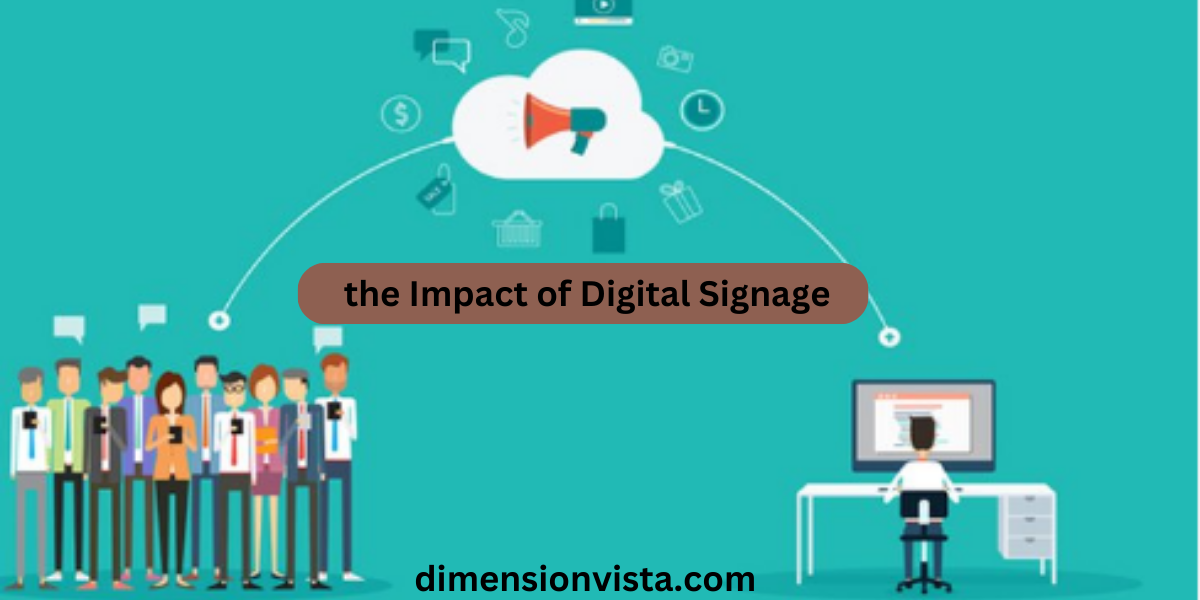In today’s fast-paced and digitally-driven world, businesses and organizations are constantly seeking innovative ways to capture attention and engage their audiences. One such innovation that has transformed the way brands communicate is digital signage. From retail stores and corporate offices to airports and healthcare facilities, digital signage has become a powerful tool for delivering information, enhancing customer experiences, and boosting sales.
This article explores the Impact of Digital Signage, backed by the latest research and trends. Whether you’re a business owner looking to improve communication or a marketer aiming to increase engagement, understanding the benefits and applications of digital signage can help you stay ahead of the competition.
What Is Digital Signage?
Digital signage refers to the use of digital displays, such as LED screens, LCD monitors, or projection systems, to present multimedia content, including text, images, videos, and animations. These displays are often centrally controlled and can be updated in real-time to deliver dynamic messages to targeted audiences.
Key Components of Digital Signage
- Display Screens: The physical hardware used to showcase content.
- Content Management Systems (CMS): Software platforms that allow users to create, schedule, and manage content remotely.
- Media Players: Devices that deliver content from the CMS to the display screens.
- Connectivity: Internet or network connections enabling real-time updates.
The Benefits of Digital Signage
1. Enhanced Customer Engagement
Digital signage grabs attention with vibrant visuals and dynamic content. According to a study by Digital Signage Today, 63% of people report that digital signage captures their attention more effectively than traditional static signage.
2. Increased Sales and Revenue
Retail businesses have experienced significant sales boosts by leveraging digital signage. For instance, studies show that 80% of brands saw a 33% increase in sales after implementing digital displays to promote their products.
3. Real-Time Updates and Flexibility
Unlike static signs, digital signage allows businesses to update content instantly. This is particularly useful for sharing time-sensitive information, such as flash sales, event announcements, or emergency alerts.
4. Cost-Effectiveness Over Time
While the initial investment may be higher, digital signage eliminates the recurring costs associated with printing and distributing traditional signage. Over time, this leads to significant savings.
5. Improved Brand Awareness
Dynamic, high-quality visuals help reinforce brand identity and leave a lasting impression on customers.
Real-World Applications of Digital Signage
1. Retail

Digital signage is widely used in retail to promote products, offer discounts, and provide wayfinding assistance. Interactive displays allow customers to browse products or check inventory, creating a seamless shopping experience.
2. Healthcare

Hospitals and clinics use digital signage to provide patient information, wayfinding, and educational content. It reduces perceived wait times by entertaining patients in waiting areas.
3. Hospitality

Hotels and restaurants leverage digital signage for menu boards, event promotions, and personalized guest greetings. This enhances the overall guest experience and streamlines communication.
4. Corporate Environments

In offices, digital signage is used for internal communications, such as sharing company updates, recognizing employee achievements, and displaying KPIs on dashboards.
5. Transportation

Airports, train stations, and bus terminals rely on digital signage for real-time updates on arrivals, departures, and delays, as well as advertising opportunities.
Key Trends Shaping the Future of Digital Signage
1. Interactive Displays
Touchscreen technology enables interactive digital signage, allowing users to engage directly with the content. This is particularly effective in retail and educational settings.
2. AI and Personalization
Artificial intelligence is enabling more personalized content delivery. For example, AI-driven signage can analyze audience demographics and display tailored advertisements in real-time.
3. Integration with IoT
Digital signage is increasingly being integrated with Internet of Things (IoT) devices, such as smart sensors and cameras, to provide context-aware content based on environmental factors like weather or foot traffic.
4. Sustainability
Many businesses are turning to energy-efficient displays and eco-friendly materials, reducing the environmental impact of their digital signage solutions.
5. Cloud-Based Solutions
Cloud-based CMS platforms are making it easier for businesses to manage content remotely across multiple locations, ensuring consistency and scalability.
Common Challenges and Solutions
1. High Initial Costs
While the upfront investment can be significant, businesses can start with smaller deployments and scale over time. Leasing options and bundled solutions also make it more affordable.
2. Content Fatigue
Repetitive or poorly designed content can lead to audience disengagement. Regular updates and professional content design can keep the messaging fresh and impactful.
3. Technical Issues
Connectivity problems or hardware malfunctions can disrupt operations. Investing in reliable equipment and a robust support system can minimize downtime.
Actionable Tips for Maximizing the Impact of Digital Signage
- Define Clear Objectives: Determine what you want to achieve, whether it’s increased sales, better communication, or enhanced customer experiences.
- Invest in Quality Content: Engaging visuals and well-crafted messages are key to capturing attention.
- Leverage Data Analytics: Use analytics tools to track performance and optimize your strategy.
- Test and Iterate: Continuously test different content formats, designs, and placements to see what resonates most with your audience.
- Integrate with Other Channels: Combine digital signage with social media campaigns, email marketing, and in-store promotions for a cohesive strategy.
Conclusion
Digital signage is no longer a luxury; it’s a necessity for businesses aiming to stay competitive in a visually driven marketplace. By enhancing engagement, streamlining communication, and providing real-time flexibility, digital signage offers unparalleled opportunities to connect with audiences.
Whether you’re a small business or a global enterprise, investing in digital signage can transform the way you interact with customers and stakeholders. Start small, focus on quality, and embrace the latest trends to maximize its potential.

